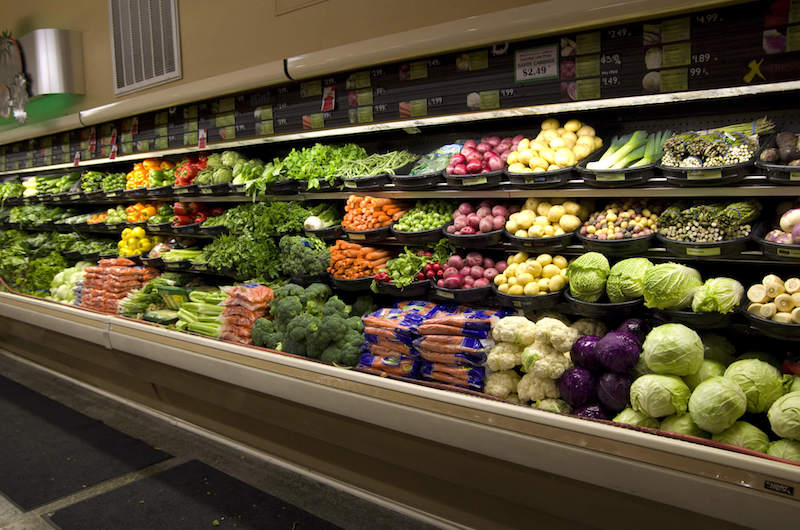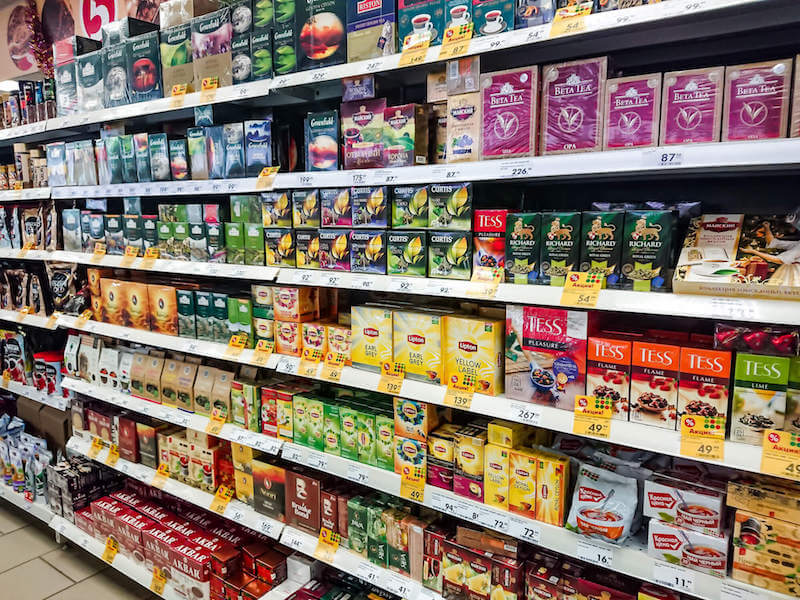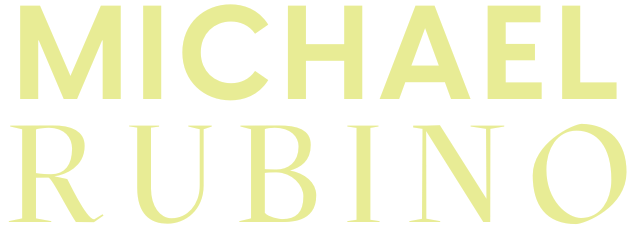Mold in grocery stores. It’s probably not something you typically think about when you’re writing out your grocery list.
Most debates regarding these providers of foodstuffs revolve around which retailer has the best selection or the lowest price. Not unlike choosing your favorite football team and defending their greatness to those who happen to prefer a less favorable grocery store.

Then there are those of us who dread grocery shopping, opting to go to the closest one and speed through like our cart is on fire. No matter how fast we zip through the store, though, we always seem to fall victim to the worldwide grocery curse and run into someone we know who wants to stop for a quick chat. Why is that?!
Whatever your food shopping preference, every grocery store or supermarket has the opportunity for moldy catastrophes. With over 40,000 stores in the United States alone, that’s a lot of mold growth potential!¹
Now factor in that these are the locations housing the food you’re about to take home for you and your family… Knowing what locations are hotspots can help prevent mold in your shopping cart and ensure your preferred shopping location has your health and the health of your family at heart.
All About Mold
Before pointing out the biggest problematic areas, it’s best to start with a solid foundation of what mold is so you’ll know how these places become moldy.
Mold is a type of fungus that reproduces asexually by creating microscopic spores that it shoots into the air.² Picture a dandelion puff releasing it’s seeds into the air and you’ll have the right idea. With over 100,000 species of mold identified so far, it’s pretty simple to say that mold and it’s spores are everywhere: in the forest, inside your car, on your dog’s paws, and within your home.³
All of which aren’t a problem! It’s just a part of nature. The issue with mold occurs when a spore finds a nice home inside a building. Which is fairly easy to do. Most species of mold require four main components to live: oxygen, temperature, food, and moisture. The first three ingredients for life are easy to come by (especially in a grocery store).⁴ Moisture is the golden ticket for a mold spore particle to join the world of the living.
Once the spore puts down its roots, literally, it immediately begins colonizing the area and releasing more tiny spores into the indoor air. Some species of mold can also produce microscopic toxins, called mycotoxins, that they also release into the air and which stick to any surface they come in contact with.⁵ Exposure to a high volume of these foreign particles can wreak havoc on our health, hence why indoor mold growth is a problem.⁶

Mold and You
Researchers are hard at work attempting to determine exactly how and to what extent mold impacts our health. With so many species, the potential for byproducts, and the interaction with aspects like genetics and preexisting conditions make it hard to pinpoint exactly how mold exposure will affect us.
The general agreement, though, is that mold exposure can cause a list of side effects depending on the individual.⁷’⁸ Some might experience no effect for a long while and others will immediately begin feeling symptoms. Those with developing and compromised immune systems, for instance, are far more likely to experience heightened sensitivity to indoor mold.⁹ Eventually, though, prolonged exposure will result in our bodies reaching their toxic load, which can cause symptoms ranging from mildly irritating to fairly severe.

These symptoms can include:
- Brain Fog
- Chronic Fatigue
- Headaches/Migraines
- Coughing
- Runny Nose
- Rashes
- Digestive Issues
- Neurological Problems
- Respiratory Issues
Again, it all depends on the individual. That’s why it’s important to eliminate indoor mold growth immediately when it’s found and actively prevent it from growing in the first place.
Mold in Grocery Stores
Now that you’ve got the cliffnotes on mold, it’s easy to see why grocery stores and supermarkets are dream homes for mold spores. The buildings are temperature controlled, there’s an abundance of dinner options, and moisture is everywhere. From spills to condensation and equipment leaks, there are many places for mold spores to maximize.
The more mold spores that are released in the air after one spore settles in, the more they can opportunistically find other places to reside. All it takes is 24-48 hours for mold spores to grow and begin to colonize. That’s a pretty short window!
So the question is, does your favorite grocery store actively prevent moldy opportunities and do they handle mold growth correctly? Unfortunately, they may not! Which is why we, as shoppers, need to be aware of the top areas for mold in grocery stores.
Mold in Grocery Store Refrigerators
Refrigerators abound in grocery stores. From cheese and eggs to your favorite pre-prepared grilled chicken salad, these cooling units help keep your beloved food products chilled and safe to eat. Or at least, they should.
There are a few types of refrigerator units in grocery stores and supermarkets, but most fall into the categories of enclosed or wall chillers. Whatever the unit, the enemy grocery store employees face is moisture in any form. From spills to humidity and condensation, these machines are ripe with potential wet possibilities. And don’t even get me started on the drains in many of these fridges.
That’s not the only enticing aspect of refrigerators, though. Since these machines house food products, mold spores have an abundance of sustenance to use for growth inside the machine if they happen upon a damp area.

That can lead to a large amount of mold spores on food packaging, mold spores on the food itself, and mold spores ending up in your home. All of which aren’t fantastic for your health. And remember, too! These particles are microscopic, so not only can you not see the spores, you won’t always be able to see if they’ve started growing on the food products you select. Yuck!
Not that you’re probably thoroughly grossed out, you’re probably thinking, "How do we avoid that ASAP?!"
The short answer is cleaning and maintenance! It’s impossible to completely prevent spores from making their way inside of the cases (mold spores are everywhere). So, preventative action needs to be taken to remove environments that can support mold growth and to remove as many spores and toxins present as possible.
Some tips for preventing mold in grocery store refrigerators include:
- Wipe down the surfaces daily using an EPA-approved cleaning product, like Benefact Decon 30
- Deep clean once a week, including wiping down parts like vacuum coils and door gaskets (take a look at the manufacturer’s manual for a better list of cleaning procedures for each particular machine)
- Clean the condensing coil and evaporator regularly
- Routinely hire a professional to clean the drain lines
- Maintain the correct temperature inside the unit to avoid condensation by actively taking steps to keep the doors closed and ensuring the airflow system is operating properly
- Wipe up spills quickly and thoroughly
- Keep up with maintenance and replace components when directed by the manufacturer's manual
- Regularly schedule a service technician to come in and inspect each machine to make sure they’re operating properly
These are just a few steps grocery stores can take to help ensure mold growth doesn't run rampant in their refrigeration units. Other steps, like discarding expired food promptly, can also prevent this tenacious fungus from growing.
Mold in Grocery Store Produce Sections
"Eat more fruits and vegetables," is the common slogan for improving diet and health. Mold on fruits and vegetables can definitely have the opposite effect, and it might be happening to the fresh products right in your own favorite store.

There is a list of ways mold spores can begin colonizing the fresh produce section. Lack of cleaning, failure to dispose of expired and/or rotten food, and improperly maintained machines are a few.
And let’s not forget the biggest mold growth culprit: produce misters. As kids, most of us looked at these misters with awe and excitement when they came on during the shopping trip. Now the magic doesn’t seem quite as entertaining, especially when you factor in the moldy opportunities these machines create.
Remember, mold spores love and require moisture. Which is pretty much the name of the game when it comes to produce misting systems! While they’re busy keeping fruits and vegetables looking fresh, they could also be creating nice little homes for mold spores. Improperly maintained misting systems can also be home to a plethora of bacteria, another particle that is bad for our health.
Reducing moldy opportunities in the produce aisles is very similar to keeping refrigerators fungus-free. For grocery store employees, creating and implementing a cleaning schedule is key. The manufacturer’s manual will again be your friend when it comes to cleaning protocols, parts that can be removed and wiped down, and how frequently some cleaning needs to be taken on.
For the most part, wipe down surfaces with an EPA-approved disinfectant and remove any expired or rotten food daily. You’re fighting against constant moisture, so removing any rogue particles and as much pooled water as possible will be the constant battle. Deep clean often (once a week is best), including removable parts like the misting system nozzles and any drip pans. Hire a professional to clean those hard to handle areas, like the mister and drainage lines.
From there, maintenance is paramount. Making sure the machines are operating correctly reduces malfunctions that could lead to mold growth. This includes replacing parts as the manufacturer’s manual directs, keeping an eye out for any leaks, and routinely hiring a professional to come in and assess the equipment. An added perk of properly maintaining these machines is that it helps save on energy costs, reduces food spoilage opportunities, and increases their lifetime.
Mold on Grocery Store Shelves
Every once in a while, certain shelves in grocery stores will empty out, like when there’s a chance of snow in the South. The bread, egg, chip, peanut butter, and milk shelves empty out faster than a Formula 500 car on race day.
With so many shelves in a grocery store, not every shelf is routinely emptied out like the candy aisle on Halloween. Some are neglected for quite some time. Cue mold spore happiness! All it takes is a leaky product, spilled container, or expired goods left for an extended time to open the door for mold growth.
For grocery store employees, it’s important to make sure these shelves get cleaned and disinfected regularly to remove added food sources for mold and to remove any present spores. Regular cleaning will also help ensure that no spills go unnoticed for an extended period of time that could allow for colonization.
Speaking of spills, like the refrigerator and produce sections, removing spills quickly and thoroughly should be priority number one to decrease moldy opportunities. It’s also highly important to remove expired food promptly to avoid any fungus growth and contamination.

The final piece of the puzzle is humidity levels. Keeping the humidity level inside of the store at the EPA recommended sweet spot of 30-50 degrees will help decrease moldy opportunities that could make their way onto a shelf.¹⁰ All it takes is one area of condensation to open up the fungus flood gates.
For shoppers, make sure to keep an eye on the shelves where you’re grabbing your food goods. Make sure they look clean, are free from spills, and not filled with expired products. Plus, it’s never a bad idea to glance at the back of the shelf if you can to check for any visible mold growth. It's kind of gross to think about, but it can absolutely happen! Again, not all grocery stores are on their game when it comes to mold growth mitigation.
These are just a few of the main areas where mold in grocery stores can pop up, but it’s not the full list. A leak in the storage area could cause huge levels of mold colonization if not handled properly. Grocery stores should have a plan in place to deal with mold growth if a water event occurs and it’s never a bad idea to hire an air quality specialist to come in and assess the space every so often to make sure no problems exist unknowingly to those in the building.

Why You Should Consider Mold in Grocery Stores
You may be thinking, "Okay, great, but I’m not a grocery store manager. Why do I need to know how to keep mold away from these areas?" Unfortunately, not all stores preventatively take action to remove mold growth. They’re focused on the cost-benefit analysis and how not to lose money. That mindset doesn’t always include preventing and handling mold growth. Which means it’s up to you, the shopper, to make sure they’re prioritizing your health.
So the next time you’re at your favorite grocery store or supermarket, take a few extra minutes to inspect these hotspot areas.
Do you see any mold growth? Do you smell a musty aroma that doesn’t belong to the foodstuffs? Are employees taking care of spills or actively cleaning?
To go one step further, you can also ask management a few questions to see what they’re doing to stop mold growth and to prioritize your health. All too often, we only think about moldy food at grocery stores, but the buildings themselves can be filled with colonies. Even inside the walls! Not ideal for buildings that house the products we consume every day.
That’s why it's important for these companies to make sure they’re creating healthy indoor environments to shop in and fewer opportunities for mold spores to hitchhike their way into your home on foodstuffs. Everyone deserves to consume healthy products, every home should be protected as much as possible from contaminated items, and every employee deserves safe, clean environments to work in.
- World, I. B. I. S. (2021, July 29). Supermarkets & Grocery Stores in the US - Number of Businesses 2003–2027. IBISWorld. Retrieved October 26, 2021, from https://www.ibisworld.com/industry-statistics/number-of-businesses/supermarkets-grocery-stores-united-states/.
- Environmental Protection Agency. (n.d.). Mold. EPA. Retrieved August 17, 2021, from https://www.epa.gov/mold.
- Centers for Disease Control and Prevention. (2020, August 11). Basic facts about mold and dampness. Centers for Disease Control and Prevention. Retrieved August 17, 2021, from https://www.cdc.gov/mold/faqs.htm.
- Lstiburek, J., Brennan, T., & Yost, N. (2002, January 15). Rr-0208: What you need to know about mold. Building Science Corporation. Retrieved August 18, 2021, from https://www.buildingscience.com/documents/reports/rr-0208-what-you-need-to-know-about-mold/view.
- World Health Organization. (n.d.). Mycotoxins. World Health Organization. Retrieved August 26, 2021, from https://www.who.int/news-room/fact-sheets/detail/mycotoxins.
- Kim, K. H., Kabir, E., & Kabir, S. (2015). A review on the human health impact of airborne particulate matter. Environment international, 74, 136-143.
- Curtis, L., Lieberman, A., Stark, M., Rea, W., & Vetter, M. (2004). Adverse health effects of indoor molds. Journal of Nutritional & Environmental Medicine, 14(3), 261-274.
- Bush, R. K., Portnoy, J. M., Saxon, A., Terr, A. I., & Wood, R. A. (2006). The medical effects of mold exposure. Journal of Allergy and Clinical Immunology, 117(2), 326-333
- Environmental and Occupational Health Assessment Program, & Environmental and Occupational Health Assessment Program, & Health Science Section, Mold Basics for Primary Care Clinicians (2009). Hartford, CT; Connecticut Department of Public Health. , H. S. S., Mold Basics for Primary Care Clinicians 1–10 (2009). Hartford, CT; Connecticut Department of Public Health.
- EPA. (n.d.). A Brief Guide to Mold, Moisture and Your Home. EPA. Retrieved October 26, 2021, from https://www.epa.gov/mold/brief-guide-mold-moisture-and-your-home#tab-6.
